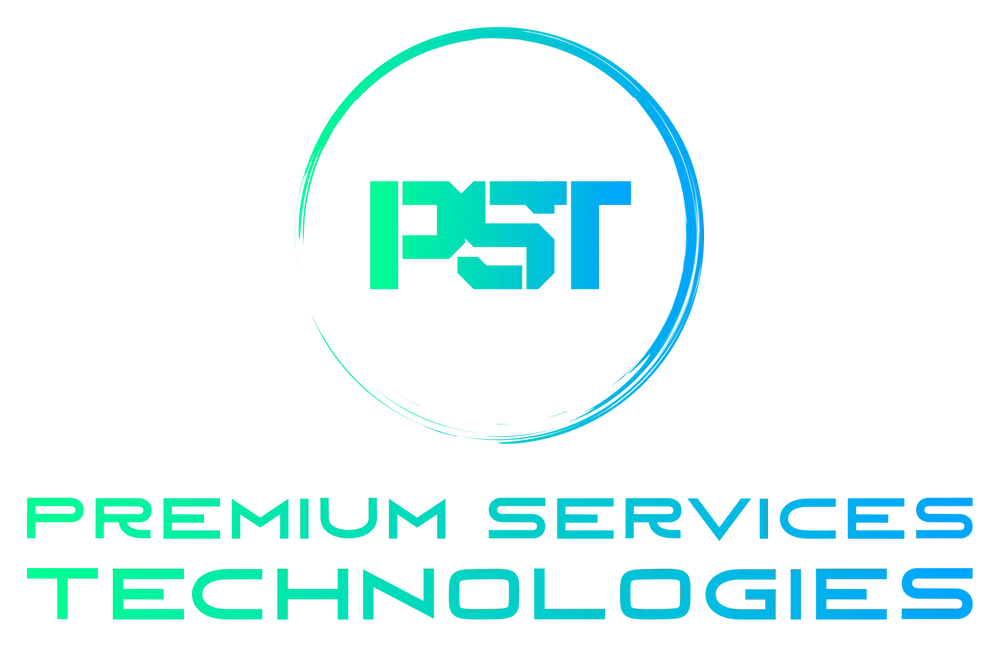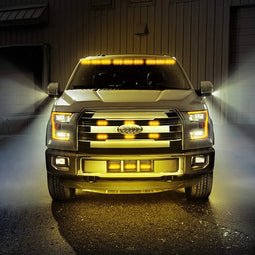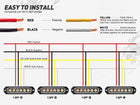What Are Strobe Lights and Why Install Them?
Strobe lights are high-intensity lighting fixtures that produce brief, bright flashes of light at regular intervals. These powerful lighting effects create dramatic visual impact and are essential for creating dynamic atmospheres in entertainment settings, emergency applications, and commercial venues.
Benefits of Installing Professional Strobe Lights
- Create professional-grade lighting effects for venues and events
- Enhance safety visibility in emergency and warning applications
- Add excitement to DJ performances and entertainment spaces
- Increase venue atmosphere and energy levels
- Provide versatile lighting control with modern LED controllers
Types of Strobe Lights for Installation
LED Strobe Lights - Modern Choice
Modern LED strobe lights offer superior energy efficiency and extended lifespan. They're perfect for permanent installations due to their low heat output, reduced power consumption, and exceptional durability. According to the U.S. Department of Energy, LED lighting uses 75% less energy than traditional incandescent lighting.
Xenon Strobe Lights - High Intensity
Traditional xenon strobes provide intense, bright flashes and are commonly used in professional entertainment venues. They require more power but deliver exceptional brightness levels suitable for large spaces and outdoor applications.
Battery-Powered Strobe Lights
Portable battery-powered strobe lights don't require electrical installation, making them perfect for temporary setups, mobile entertainment, or emergency backup lighting systems.
Essential Tools and Materials for Professional Installation
Required Installation Tools
- Wire strippers (12-14 AWG)
- Multimeter/Electrical tester
- Wire nuts (appropriate gauge)
- Electrical tape (UL listed)
- Drill with bits
- Screwdriver set
- Ladder or step stool
- Level
- Safety glasses
- Non-contact voltage tester
- Insulated gloves
- Circuit tester
Required Materials
- Professional strobe light fixtures (SAE certified for safety applications)
- Mounting brackets and hardware
- Electrical wire (appropriate gauge for load - typically 14 AWG for most strobe lights)
- Junction boxes (UL listed)
- Wall anchors or ceiling mounting hardware
- Circuit breaker (appropriate amperage)
- DMX controller (for advanced lighting control)
Pre-Installation Safety Requirements
Mandatory Safety Checklist
- ✅ Verify power is off with non-contact voltage tester
- ✅ Check local building codes and permit requirements
- ✅ Ensure proper grounding according to NFPA standards
- ✅ Use appropriate circuit protection (GFCI where required)
- ✅ Wear safety equipment throughout installation
- ✅ Plan for photosensitive epilepsy warnings in public spaces
Step-by-Step Strobe Light Installation Process
Planning Your Strobe Light Installation
Choose Optimal Locations
- Consider room dimensions - Calculate coverage area for each fixture
- Plan for even light distribution - Avoid dark spots and overlapping zones
- Avoid heat sources - Maintain clearance from HVAC vents and heating elements
- Ensure maintenance access - Plan for easy bulb replacement and cleaning
- Consider viewing angles - Position for optimal visual impact
Calculate Power Requirements
- Check individual fixture wattage - Verify specifications on each strobe light
- Calculate total circuit load - Add all fixtures plus 20% safety margin
- Verify circuit capacity - Ensure existing circuits can handle additional load
- Plan for control systems - Include controller power requirements
Installing Professional Mounting Hardware
For Ceiling Installation
- Locate ceiling joists using electronic stud finder
- Mark mounting points ensuring proper spacing
- Drill pilot holes in structural members
- Install mounting brackets with appropriate lag screws
- Test mount stability before proceeding with electrical connections
For Wall Mounting
- Locate wall studs for secure mounting points
- Mark bracket positions using level for accuracy
- Use appropriate anchors for wall construction type
- Install brackets securely with proper fasteners
- Verify mount can support fixture weight plus dynamic loading
Running Professional Electrical Connections
Wire Installation Process
- Run electrical cable from circuit panel to each fixture location
- Install UL-listed junction boxes at each strobe light position
- Connect wires properly according to electrical code
- Use appropriate wire nuts for secure connections
- Wrap connections with electrical tape for added protection
Standard Wire Color Coding
| Wire Color | Function | Connection Point |
|---|---|---|
| Black | Hot (Power) | Line voltage supply |
| White | Neutral | Return path to panel |
| Green/Bare | Ground | Safety grounding system |
Installing the Strobe Light Fixtures
Mounting Process
- Attach strobe light to pre-installed mounting bracket
- Make electrical connections inside junction box
- Secure all wire connections with appropriate connectors
- Install fixture cover or protective housing
- Test fixture stability and electrical connections
Connecting Advanced Control Systems
Basic On/Off Control
- Wire to standard wall switch for simple operation
- Install compatible dimmer if supported by strobe lights
- Test switching functionality before final installation
Professional DMX Control Setup
- Connect DMX controller to first strobe light
- Chain additional fixtures using standard DMX cables
- Set unique DMX addresses for each fixture
- Program controller for desired lighting effects
- Test all control functions before completing installation
Advanced Installation Techniques for Professional Applications
Multiple Strobe Light Configurations
Series vs. Parallel Wiring Considerations
| Wiring Method | Advantages | Best Applications |
|---|---|---|
| Series Wiring | Lower current draw, synchronized operation | Simple on/off applications |
| Parallel Wiring | Independent control, better fault isolation | Professional venues, complex control |
Load Calculation Requirements
- Calculate total amperage draw - Add all fixture loads
- Use appropriate wire gauge - Follow NEC Table 310.15(B)(16)
- Install proper circuit protection - Size breakers correctly
- Plan for synchronized operation - Use timing controllers when needed
Sound-Activated Installation Systems
Installing Sound Sensor Controls
- Mount microphone sensor in optimal acoustic location
- Connect sensor to strobe controller using proper cable types
- Adjust sensitivity settings for room acoustics
- Test with various music levels and frequencies
- Set appropriate delay/hold times for smooth operation
Troubleshooting Common Installation Issues
- Check all power connections with multimeter
- Verify circuit breaker hasn't tripped
- Test fixture with known good power source
- Replace defective LED module or xenon tube
- Check control signal connections
- Verify all wire connections are secure
- Check for proper voltage supply (measure at each fixture)
- Clean all electrical contacts
- Replace aging components or controllers
- Synchronize DMX addressing if using digital control
- Ensure adequate ventilation around fixtures
- Verify fixture wattage doesn't exceed ratings
- Check electrical supply voltage is within specifications
- Install thermal protection devices where required
- Consider upgrading to more efficient LED strobe lights
Professional Maintenance and Safety Guidelines
Regular Maintenance Schedule
Monthly Inspections
- Clean fixture lenses with appropriate cleaning solutions
- Inspect mounting hardware for loosening or wear
- Test electrical connections for signs of heating or corrosion
- Verify proper operation of all control functions
- Document any issues for trending analysis
Annual Professional Maintenance
- Complete electrical inspection by qualified technician
- Replace aging components based on manufacturer recommendations
- Update control systems and software as needed
- Verify continued code compliance with current standards
- Performance testing and calibration
Safety Best Practices for Operation
- Never exceed fixture power ratings - Follow manufacturer specifications
- Post epilepsy warnings in public spaces as required by ADA guidelines
- Maintain clear emergency exits during operation
- Train operators on proper use and emergency procedures
- Keep backup lighting available for safety during events
Cost Analysis and ROI for Professional Installation
Investment Planning
| Component | Price Range | Professional Grade |
|---|---|---|
| Basic LED Strobe Lights | $75-250 each | Commercial quality, 5+ year warranty |
| Professional Xenon Strobes | $300-1200 each | High-intensity, venue-grade |
| DMX Controllers | $150-800 | Multi-channel, programmable |
| Installation Materials | $75-200 | UL-listed components, proper gauge wire |
Professional Installation Costs
- Licensed electrician rates: $85-180 per hour
- Typical installation time: 3-8 hours depending on complexity
- Electrical permits: $75-300 (varies by location)
- Inspection fees: $100-250 (if required)
Energy Efficiency and Operating Costs
LED vs. Traditional Strobe Comparison
Why Choose LED Strobe Lights:
- 85% more energy efficient than xenon strobes
- 50,000+ hour lifespan vs. 1,000-3,000 hours for xenon
- 90% less heat generation - reduced cooling costs
- Instant on/off capability - no warm-up time
- Superior color options and control flexibility
- Reduced maintenance costs - fewer bulb replacements
Legal Requirements and Code Compliance
Building Code and Safety Standards
Key Compliance Requirements
- Follow local electrical codes based on NFPA 70 (NEC)
- Obtain required permits for permanent electrical installations
- Ensure proper emergency lighting compliance
- Meet accessibility standards where applicable
- Follow fire safety codes for commercial installations
- Comply with noise ordinances for audio-reactive systems
Professional vs. DIY Installation Considerations
| Installation Type | Suitable for DIY | Requires Professional |
|---|---|---|
| Simple plug-in fixtures | ✅ Yes | ❌ No |
| Hard-wired residential | ⚠️ With experience | ✅ Recommended |
| Commercial installations | ❌ No | ✅ Required |
| High-voltage systems | ❌ No | ✅ Required |
PST Light Professional Solutions for Strobe Light Installation
Premium Strobe Light Systems from PST Light
PST Light offers comprehensive professional strobe lighting solutions with expert installation support and industry-leading warranties.
🔆 Professional LED Strobes
- High-intensity LED strobes - Maximum visibility
- Energy-efficient designs - Up to 85% power savings
- 50,000+ hour lifespan - Reduced maintenance costs
- Instant flash capability - No warm-up time required
⚡ Advanced Control Systems
- DMX Controllers - Professional programming
- Sound-activated modes - Music synchronization
- Wireless control options - Remote operation
- Multi-zone programming - Complex lighting scenes
🛠️ Installation Support
- Technical consultation - Expert system design
- Code compliance guidance - Meet all safety standards
- Professional installation - Certified technicians
- Comprehensive warranties - Peace of mind protection
📞 Expert Support
- Contact our experts - Professional consultation available
- Technical support - Installation guidance and troubleshooting
- Product selection help - Find the right strobe lights for your needs
- Complete documentation - Installation guides and specifications
Browse our complete range: All Strobe Lights | Emergency Lighting | Surface Mount Lights | Warning Light Systems
Frequently Asked Questions About Strobe Light Installation
Environmental Considerations and Energy Efficiency
Sustainable Lighting Solutions
Environmental Benefits of LED Strobe Technology
- Reduced carbon footprint - 85% less energy consumption than traditional strobes
- No hazardous materials - Unlike xenon tubes, LEDs contain no mercury or other toxic substances
- Longer lifespan - Reduces waste from frequent bulb replacements
- Recyclable components - Most LED fixtures can be recycled at end of life
- Reduced heat generation - Lower cooling requirements and energy waste
ENERGY STAR Considerations
While strobe lights aren't typically covered by ENERGY STAR ratings, choosing high-efficiency LED models can significantly reduce your facility's overall energy consumption and operating costs.
Future Trends in Strobe Light Technology
Emerging Technologies
Smart Strobe Light Systems
- IoT Integration - Network-connected fixtures for remote monitoring
- Automated Control - AI-driven lighting that responds to room occupancy
- Mobile App Control - Smartphone-based operation and programming
- Voice Command Integration - Compatibility with Alexa, Google Assistant
- Energy Monitoring - Real-time power consumption tracking
Advanced LED Technologies
- Higher Efficiency Chips - Next-generation LEDs with improved lumens per watt
- Tunable Color Temperature - Adjustable white light characteristics
- Improved Heat Management - Better thermal designs for longer life
- Micro-LED Technology - Ultra-compact, high-intensity light sources
Conclusion and Professional Recommendations
Installing strobe lights requires careful planning, adherence to safety standards, and proper execution to achieve optimal results. Whether you're creating an entertainment space, emergency lighting system, or professional venue, following these guidelines ensures safe, efficient, and code-compliant installations.
Key Installation Success Factors
- Thorough planning - Consider all electrical, mechanical, and safety requirements
- Quality equipment - Invest in professional-grade fixtures with proper certifications
- Code compliance - Follow all local electrical codes and safety standards
- Professional installation - Use qualified electricians for complex installations
- Regular maintenance - Implement proper care procedures for long-term reliability
When to Call PST Light Professionals
Consider professional consultation and installation services for:
- Commercial or public venues requiring code compliance
- High-voltage electrical work beyond basic residential wiring
- Complex control systems with DMX or automation requirements
- Emergency lighting applications requiring safety certifications
- Large-scale installations with multiple zones and fixtures
Ready to transform your space with professional strobe lighting? Start with quality PST Light fixtures and proper installation techniques for optimal performance, safety, and longevity.
Get Started with PST Light Today
Transform your space with professional strobe lighting systems. Our expert team provides complete solutions from design consultation to installation and ongoing support.
📞 Contact PST Light for expert consultation and professional installation services
💻 Browse Products: www.pstlight.com/collections/warning-lights
📧 Get Support: Contact us through our website for technical assistance
Professional installation available nationwide. Contact us for a custom quote and installation timeline for your project.

![[AMBER] LED Rooftop 12](http://pstlight.com/cdn/shop/products/amber-led-rooftop-12-mini-emergency-strobe-lights-bar-332150.jpg?v=1709494678)
![[AMBER-WHITE] LED Rooftop 12](http://pstlight.com/cdn/shop/products/amber-white-led-rooftop-12-mini-emergency-strobe-light-bar-808762.jpg?v=1709494662)
![[GREEN] LED Rooftop 12](http://pstlight.com/cdn/shop/products/green-led-rooftop-12-mini-emergency-strobe-lights-bar-221471.jpg?v=1709494676)
![[AMBER] LED Rooftop 12](http://pstlight.com/cdn/shop/products/amber-led-rooftop-12-mini-emergency-strobe-lights-bar-332150_{width}x.jpg?v=1709494678)
![[AMBER-WHITE] LED Rooftop 12](http://pstlight.com/cdn/shop/products/amber-white-led-rooftop-12-mini-emergency-strobe-light-bar-808762_{width}x.jpg?v=1709494662)
![[GREEN] LED Rooftop 12](http://pstlight.com/cdn/shop/products/green-led-rooftop-12-mini-emergency-strobe-lights-bar-221471_{width}x.jpg?v=1709494676)

